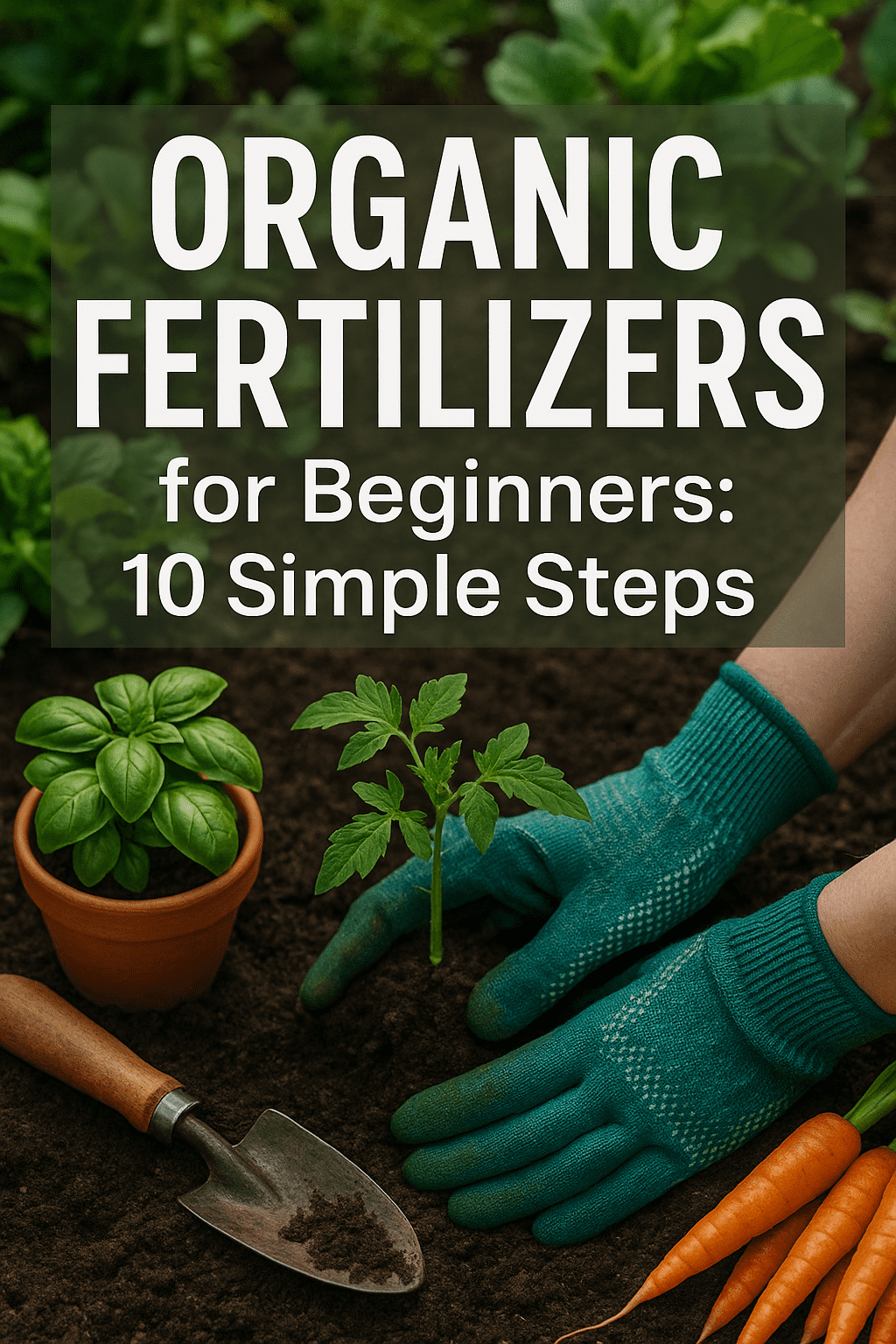
Want to grow your own fresh, chemical-free vegetables? Organic gardening is a natural and rewarding way to produce healthy food at home while improving your soil and protecting the environment. If you’re new to gardening, don’t worry — this beginner’s guide walks you through 10 simple steps to get started successfully.
1. Pick the Right Spot
Choose a location with at least 6 to 8 hours of direct sunlight per day. Good airflow and drainage are essential. If you’re limited on space, raised beds or containers on a balcony or patio can also work. Just make sure they’re exposed to plenty of natural light.
2. Plan What to Grow
Start small and choose vegetables that are easy to grow organically, such as lettuce, spinach, radishes, tomatoes, basil, and carrots. Grow what you and your family enjoy eating. Consider your local climate, space, and season when planning your crops.
3. Prepare Organic-Rich Soil
Soil health is the foundation of organic gardening. Enrich your soil by mixing in compost, aged manure, leaf mold, or worm castings. Avoid synthetic fertilizers and always choose organic matter to feed your soil microbes and build long-term fertility.
4. Choose Organic Seeds or Plants
Buy certified organic seeds and seedlings that haven’t been genetically modified or chemically treated. Local nurseries, farmers’ markets, and online retailers often have great organic selections.
5. Water Wisely
Use a watering can, drip irrigation, or soaker hoses to water the soil, not the leaves. Water early in the morning to reduce evaporation and prevent fungal diseases. Keep the soil moist but not soggy. Consistent watering is especially important for young plants.
6. Feed with Organic Fertilizers
Use natural fertilizers like compost tea, fish emulsion, worm castings, or seaweed extract. These feed the soil and plants without polluting groundwater or harming beneficial insects. Apply according to plant needs and reapply during the growing season as necessary.
7. Control Pests Naturally
Avoid chemical pesticides. Instead, use neem oil, garlic spray, or insecticidal soap to manage pests. Encourage beneficial insects like ladybugs and praying mantises. Companion planting also helps — for example, planting marigolds with tomatoes to repel harmful bugs.
8. Use Mulch to Suppress Weeds
Apply organic mulch such as straw, shredded leaves, or grass clippings around plants. Mulch suppresses weeds, keeps the soil moist, and adds organic matter as it breaks down. Avoid using dyed or synthetic mulch in organic gardens.
9. Practice Crop Rotation
To avoid depleting the soil and to reduce pest and disease buildup, rotate your crops each season. For example, don’t plant tomatoes or peppers in the same spot two years in a row. Rotate with legumes, leafy greens, or root vegetables for better soil health.
10. Start Composting
Composting turns kitchen scraps and garden waste into nutrient-rich soil. Create a compost bin or pile using items like fruit peels, eggshells, coffee grounds, and dry leaves. Avoid meat, dairy, and oily foods. Use finished compost to feed your plants and improve soil structure.
Extra Tips for Success
- Start small: Focus on 3–5 vegetables your family eats often.
- Track your progress: Keep a journal of planting dates, successes, and challenges.
- Observe daily: Monitor plant health and respond early to problems.
- Be patient: Organic gardening is a journey — it gets better every season.
Frequently Asked Questions
Can I do organic gardening in containers?
Yes! Use organic potting soil and compost, and choose containers with drainage. Many herbs and vegetables thrive in containers, making this a perfect solution for small spaces.
Is organic gardening more difficult than traditional gardening?
Not necessarily. It may take more attention to soil health and pest prevention, but once established, an organic garden is low-maintenance and incredibly rewarding.
Final Thoughts
Organic gardening is an excellent way to grow safe, healthy food while improving the soil and supporting the environment. By following these 10 beginner-friendly steps, you’ll be on your way to creating a thriving garden without chemicals. Just start small, learn as you grow, and enjoy the delicious results!
Want to build your soil naturally? Check out our post on Best Organic Fertilizers for Vegetable Gardens to improve plant health the natural way.



